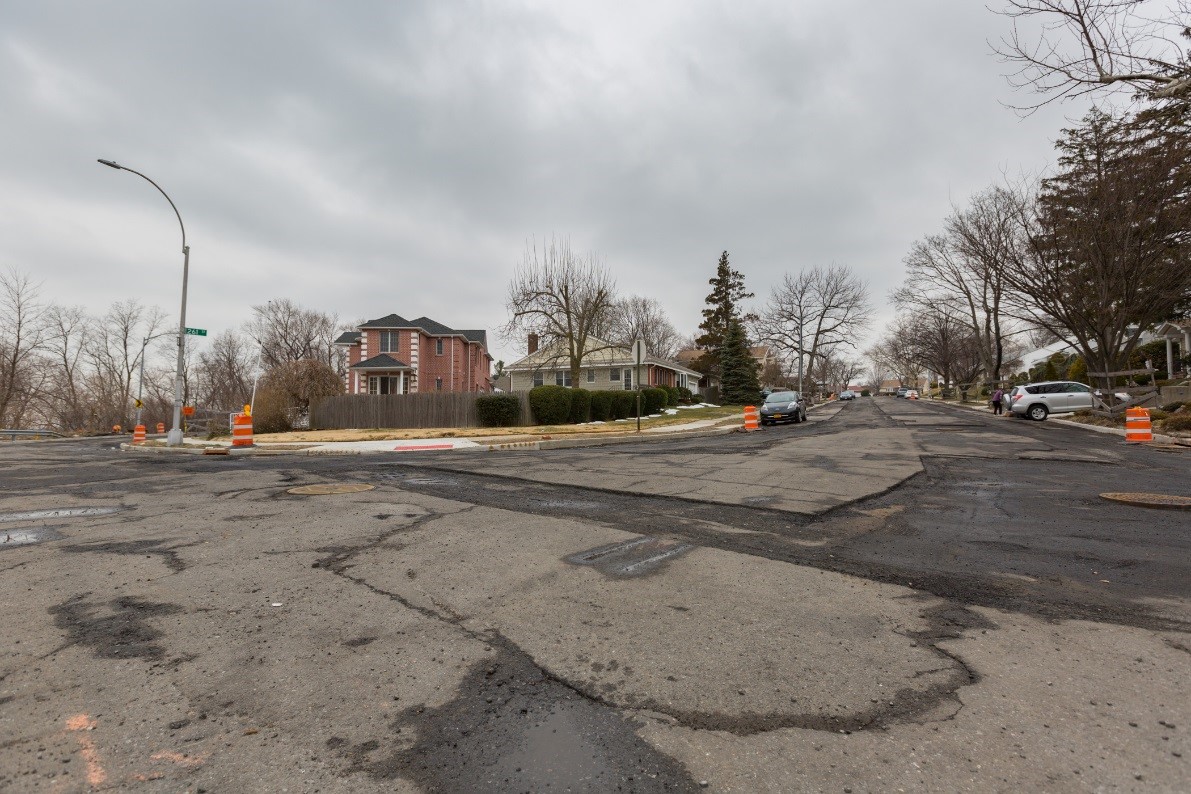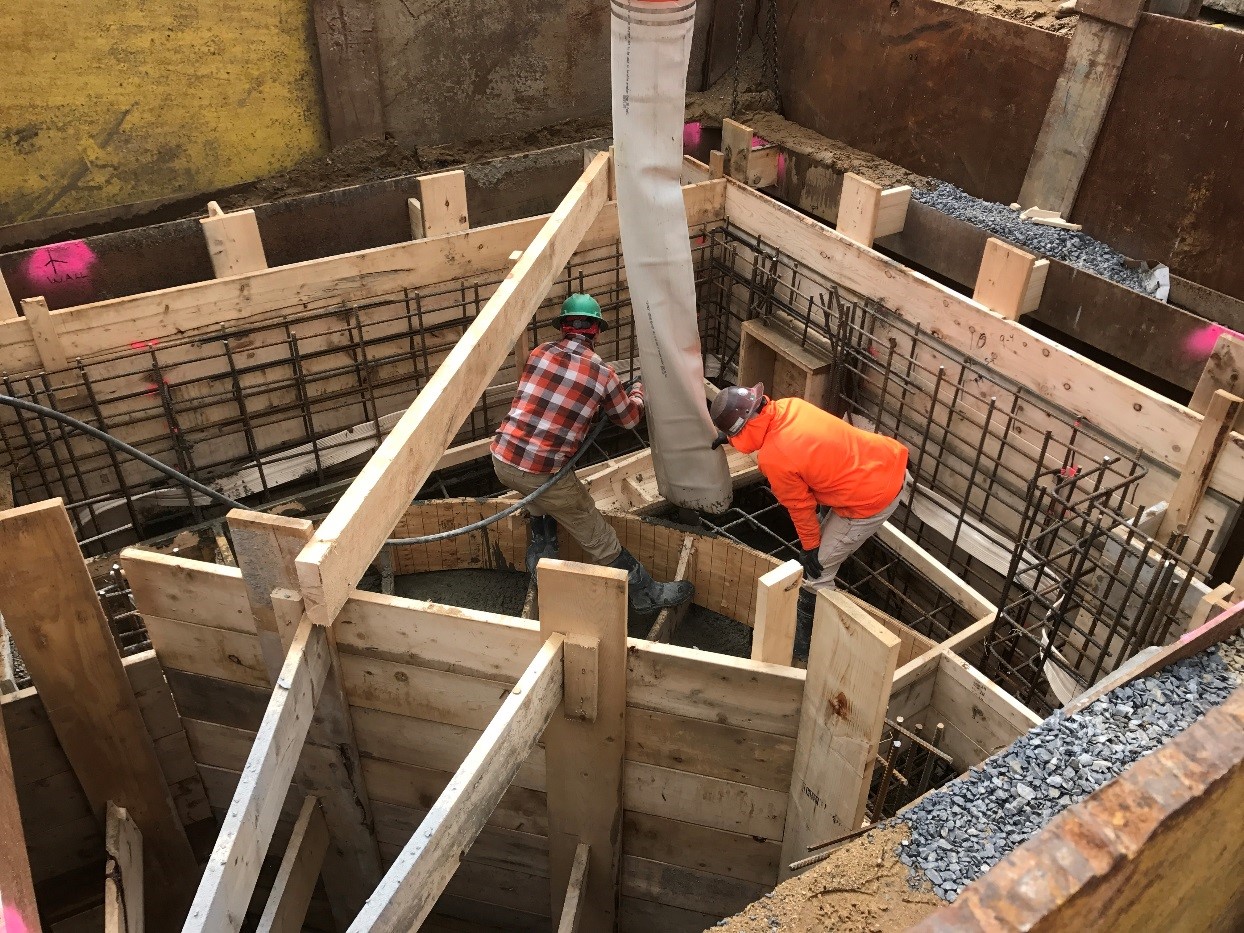
 Department of Design and Construction311
Department of Design and Construction311 Search all NYC.gov websites
Search all NYC.gov websites
Investing in Southeast Queens Streets
When It Rained It Poured
April 2018
When it rains on the highest point in Queens, the water pours downhill fast. At least it used to before a $11 million infrastructure project brought new storm sewers to the area.
Dr. Gary Spitz, an ophthalmologist specializing in cataract surgery, was looking out the front window of his house on 261st Street at the new curbs that help direct stormwater to new catch basins on his block. His house sits in an area that boasts the highest elevation in the entire borough. Over 31 years he’s seen firsthand the effect that water running downhill can have on his neighbors below.
“When it rains the water used to rush down the street and hit the people down on Bridgewater Avenue pretty hard,” said Dr. Spitz. “Now it goes in the sewers. I know they’ve done a lot of work down there over the years to stop erosion, and to shore up the hill. If this construction by my house helps them then I’m happy with it, as long as it’s making their situation better.
“I also like my new curbs,” he said. “They’re a lot better than the ones we had before, which were crumbling.”
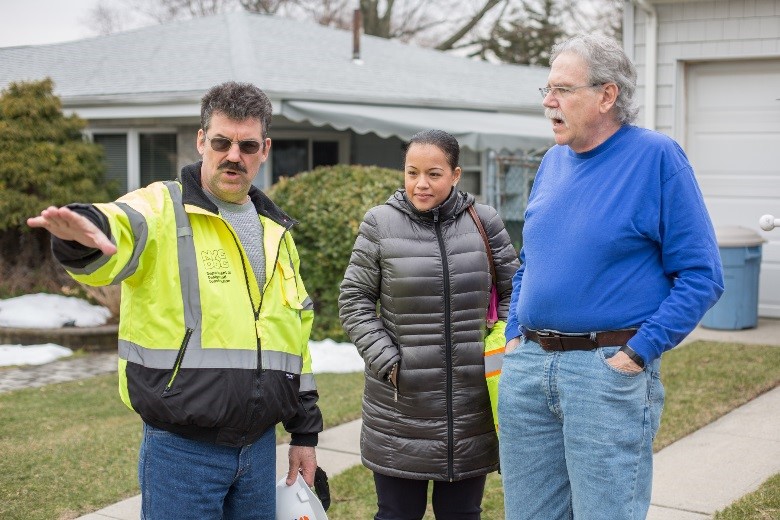
The project near Spitz’s home, being completed by the NYC Department of Design and Construction (DDC) for the NYC Department of Environmental Protection (DEP), is part of a $1.9 billion investment by the City to improve flooding and street conditions in Queens. The plan, which focuses on southeast Queens but extends in this case up to the Royal Ranch and Glen Oaks neighborhoods, consists of 55 total infrastructure projects to be completed over 20 years.
“DDC is managing almost $2 billion worth of infrastructure projects as part of the City’s southeast Queens commitment,” said DDC Acting Commissioner Ana Barrio. “Many residents are seeing the positive effects, and a lot more will over the next 15 years as it rolls out to more communities.”
More than 4,600 feet of new storm sewers have been installed over an 11-block area, some as large as 4 feet by 3.5 feet, draining into a larger sewer already in Little Neck Parkway. They are fed through 58 catch basins, positioned to best capture water as it runs downhill or collects in low-lying spots. From the highest part of the project to the lowest, the elevation changes by more than 100 feet.
“The elevation decrease leads to a very strong flow of water in the new sewer, which has to be managed,” said Eric Sattler, DDC’s Engineer-in-Charge on the project. “The sewers have to be designed with numerous stepdowns. It’s almost like an underground waterfall in some areas.”
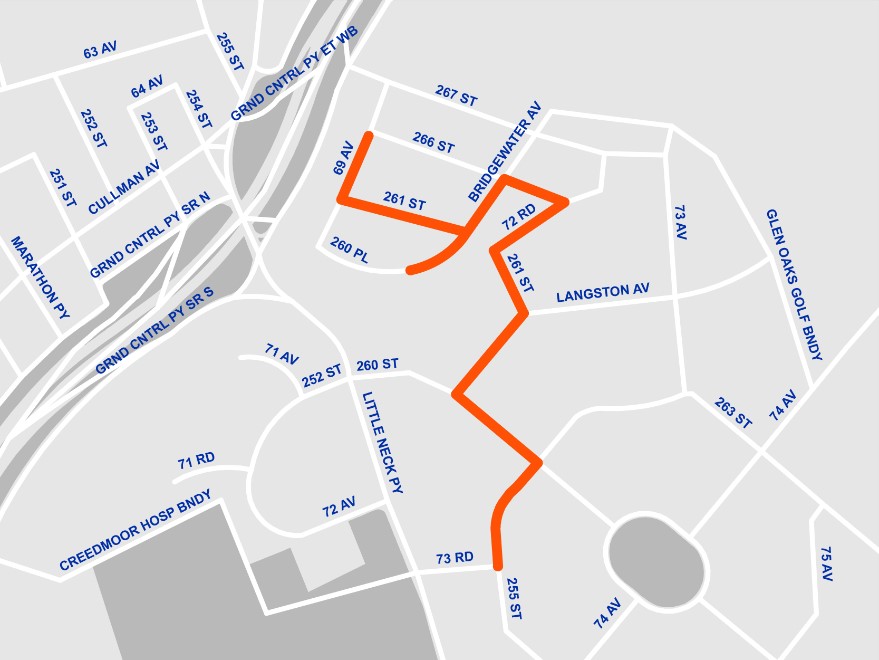
In addition to the new storm sewer system, which includes seven new underground chambers, 5,600 feet of water mains dating from the 1940s and 1950s were replaced with new ductile iron pipes. Another 4,500 feet of curbs and 1,400 feet of sanitary sewers were replaced, and four fire hydrants were added. The project, which was scheduled to end in June 2018, is almost done, with crews waiting for better weather before putting down 31,000 square yards of new asphalt, a process that will take about two weeks to complete.
Bob Friedrich is the President of Glen Oaks Village, the largest garden apartment co-op in New York City, with about 10,000 residents in 3,000 units covering 125 acres. The project affects two-thirds of the area he oversees.
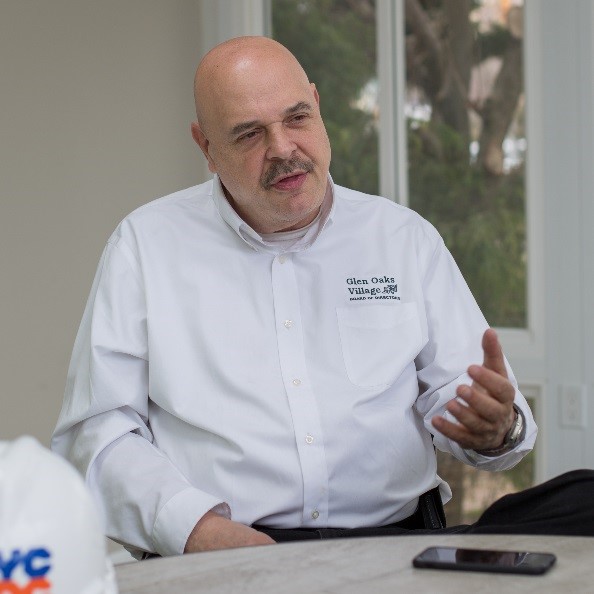
“We are at the bottom of the highest point in Queens so water really does have a tendency to rush through this community and create all kinds of problems,” said Friedrich. “After a big rain event we would have debris in the street we’d have to clean up. But I’ve seen the improvements. In the areas this project affects the flooding is gone, just gone. Years ago we used dye to track where the water flowed down the hill, and a lot of that water is now captured. Construction can be difficult to live with but I’d like to see more of it considering how well everything turned out.”
To manage the needs of residents during construction, DDC has a full-time Community Construction Liaison (CCL) assigned to the project. CCL Stephanie Soto keeps the neighborhood apprised of construction progress, coordinates street closures and arranges special requests such as deliveries to local homes. Ms. Soto works on-site and is directly accessible to the public at 347-714-0236 or by email at seq200538ccl@gmail.com.
“Stephanie has been great,” said Friedrich. “The whole crew really. We’ve never once had to go to our local Councilmember with any problems, we’ve been able to resolve them all directly with the crew that’s here. That’s been a big help.”
The general contractor on the project is C.A.C. Industries of Long Island City. Construction management services are by Hardesty & Hanover of Manhattan.
